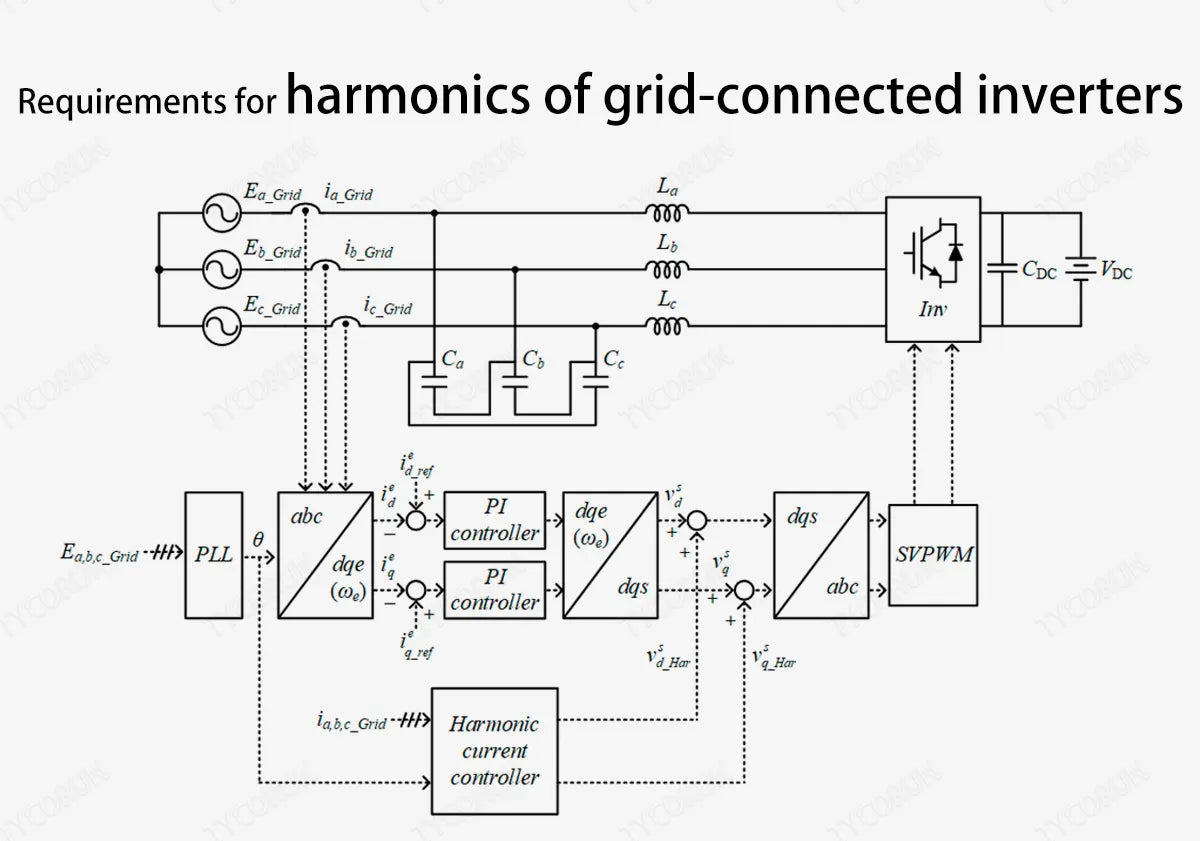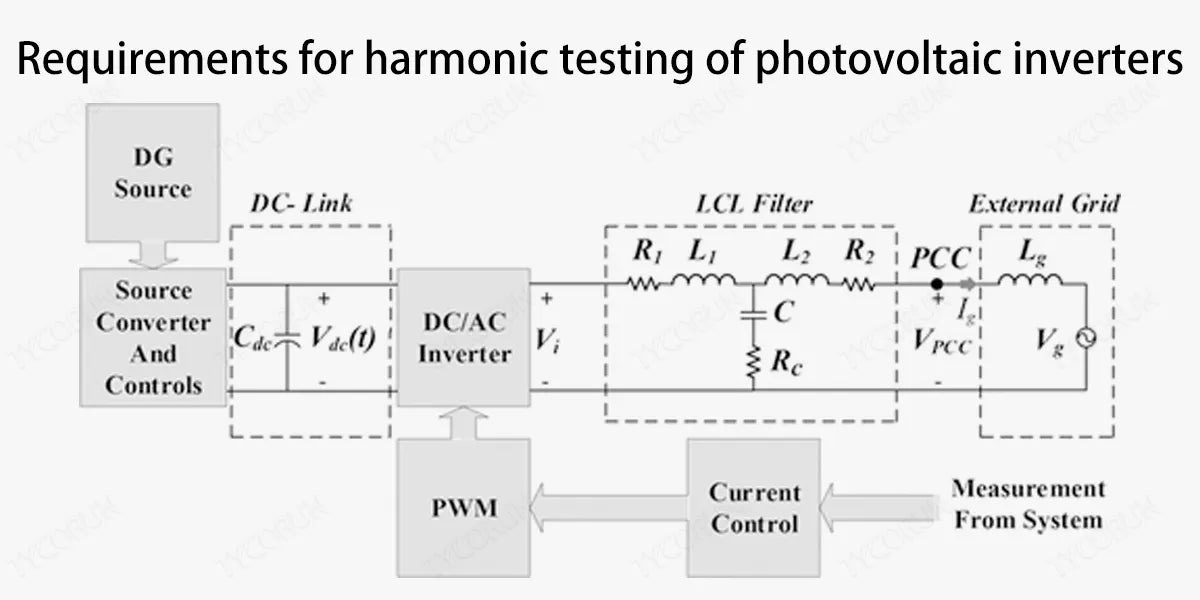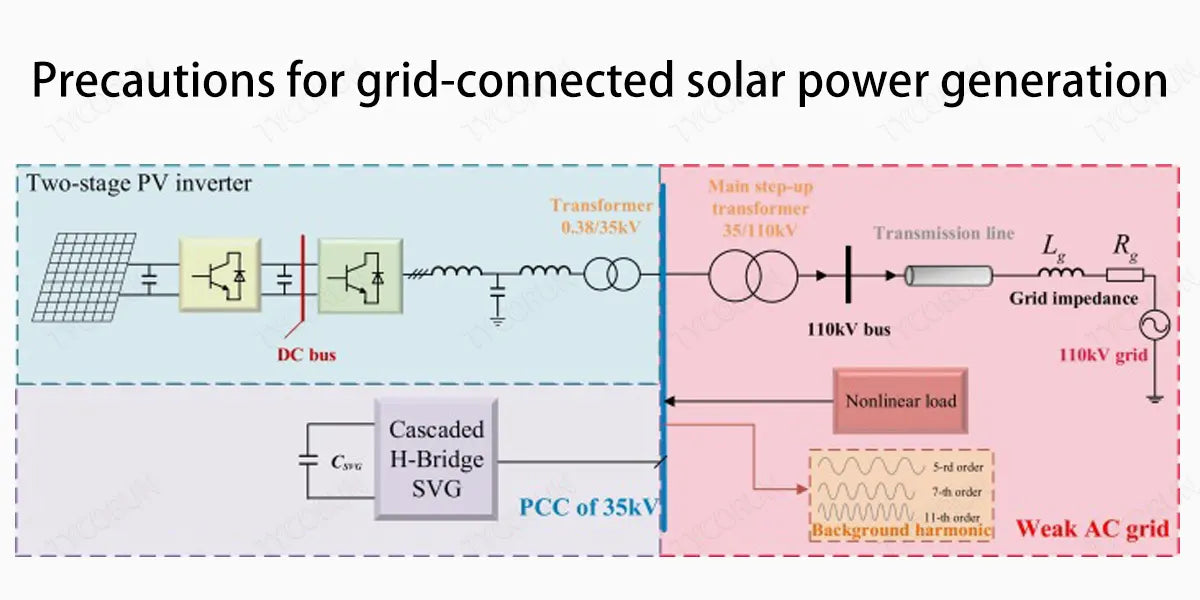
With the continuous advancement of green energy and policy support, more and more people and industries are using solar energy, and in this process, solar inverters, like 2000w inverter or 3000w inverter, have become an indispensable part.
When the solar inverter is connected to the grid, it should not cause excessive distortion of the grid voltage fluctuation or inject excessive harmonic current into the grid to ensure that it does not cause adverse effects on other equipment connected to the grid. So what are the specific harmonic limit requirements for grid-connected inverters?

Main content:
① Harmonic current content rate
The total current harmonic distortion rate limit is 5%, the odd harmonic current content rate limit is shown in Table 1 below, and the even harmonic current content rate limit is shown in Table 2.
Table 1: Odd harmonic current content rate limits
|
Odd harmonic order |
Content rate limit (%) |
|
3th~9th |
4.0 |
|
11th~15th |
2.0 |
|
17th~21th |
1.5 |
|
23th~33th |
0.6 |
|
Above 35th |
0.3 |
Table 2: Even harmonic current content rate limits
|
Even harmonic order |
Content rate limit (%) |
|
2th~10th |
1.0 |
|
12th~16th |
0.5 |
|
18th~22th |
0.375 |
|
24th~34th |
0.15 |
|
Above 36th |
0.075 |
Europe is relatively advanced in the field of photovoltaic grid connection, and has also put forward high requirements for the harmonics of solar inverters. VDE-AR-N4105 is Germany's newly promulgated low-voltage power supply grid-connected operation management regulations, which requires measuring equipment to provide measurement results up to the 178th harmonic for harmonic analysis.
In addition, the standard also has special testing requirements for parameters such as active power control accuracy and active power fluctuation.
② Requirements for harmonic testing of solar inverters
If the harmonics in the grid environment are too large, it may damage the electrical appliances. Therefore, different countries and regions have grid-connected current harmonic requirements for photovoltaic grid-connected inverters.
Generally, the total harmonics are required not to exceed 5%, and the 2nd-40th harmonic has its own content requirements. The following uses China as an example to list the national standards for grid-connected inverters. For specific values, we recommend that you refer to the regulations in your region.

- NB/T 32004 Technical specifications for grid-connected solar inverters
NB/T 32004 specifies the product types, technical requirements and test methods of inverters used in photovoltaic grid-connected systems. The solar inverter harmonic test requires the solar inverter to be conducted at rated power, with a continuous sampling time of not less than 1 minute, and a power quality analyzer to measure parameters such as total harmonic distortion and each harmonic current content rate. At the same time, the test results are required to meet the standard limit requirements.
- NB/T32006 Technical regulations for power quality detection of photovoltaic power stations
The NB/T 32006 standard specifies the power quality testing conditions, testing equipment and testing methods for photovoltaic power stations, unlike home solar power system. Among them, there are clear requirements for harmonic testing. The harmonics must be tested under different load powers, and the harmonic analysis must be no less than 50 times, and the harmonic content of each order under different power levels must be recorded.
- GB/T 14549 Power quality public grid harmonics
The GB/T 14549 standard stipulates the allowable harmonic values and test methods of public power grids with an AC frequency of 50Hz and a nominal voltage of 110KV and below. The standard stipulates that the number of harmonic tests should be no less than 30 times, requiring the instrument to have a certain ability to resist electromagnetic interference, and the test accuracy to meet the standard limit requirements.
③ Precautions for grid-connected solar power generation
- Even the best solar inverter brands are prone to produce harmonics and three-phase current imbalances when connected to power grid, and output power uncertainty can easily cause grid voltage fluctuations and flickers, which need to be managed.
- Photovoltaic voltage output is random and varies widely, and it does not have inertia. It needs to increase the rotating reserve capacity of the power grid for adjustment. There are also technical problems with various operational control measures such as analysis of power supply reliability indicators, voltage and reactive power control, energy metering and billing, and information interaction with the grid automation system.
- For a large number of distributed photovoltaic power sources connected to the distribution network, the original radiation impact distribution network has become a multi-power supply structure, and protection and automation devices need to be installed or replaced. Effective multiple protections need to be installed to solve the self-sufficiency abnormal island problem caused by photovoltaic power sources.

④ Suppression measures for inverter harmonic
The most widely used grid-connected control algorithm at present is proportional-integral (PI) control. PI control has the characteristics of simplicity, deterministic parameter setting and strong robustness, but it is difficult to accurately track time-varying AC sinusoidal signals, the system has steady-state errors, and the harmonic control effect is relatively poor.
In order to better control the grid-connected harmonic content, repetitive control was introduced, which is a control method based on the internal model principle that can eliminate periodic error signals and minimize the current harmonic content. However, due to the existence of cycle delay in the repetitive controller, the dynamic performance of the system is poor.
Based on the system model and repetitive control theory of the grid-connected inverter that work with LFP battery, a composite control algorithm that combines repetitive control and PI control is used, which can not only minimize the grid-connected harmonic content, but also improve the dynamic performance.
Specifically, the error input signal of the PI controller is superposed period by period. When the input error is not zero, the output of the repetitive controller will gradually increase, and then this part of the error is sent to the control loop, thereby achieving higher precision tracking control to effectively improve the performance indicators of grid-connected output current and reduce harmonic content.
Conclusion
For distributed photovoltaic grid-connected inverter systems, changes in environmental characteristics will often cause drastic changes in the DC input power of the inverter. Because the controller must have fast dynamic response capabilities. At the same time, since AC power is to be transmitted to the public grid and used by the power supply network load, the harmonic content of the grid must be strictly controlled.
Related posts: global top 10 best solar inverter brands, working principle of inverter, top 10 solar inverter best brands in USA
















